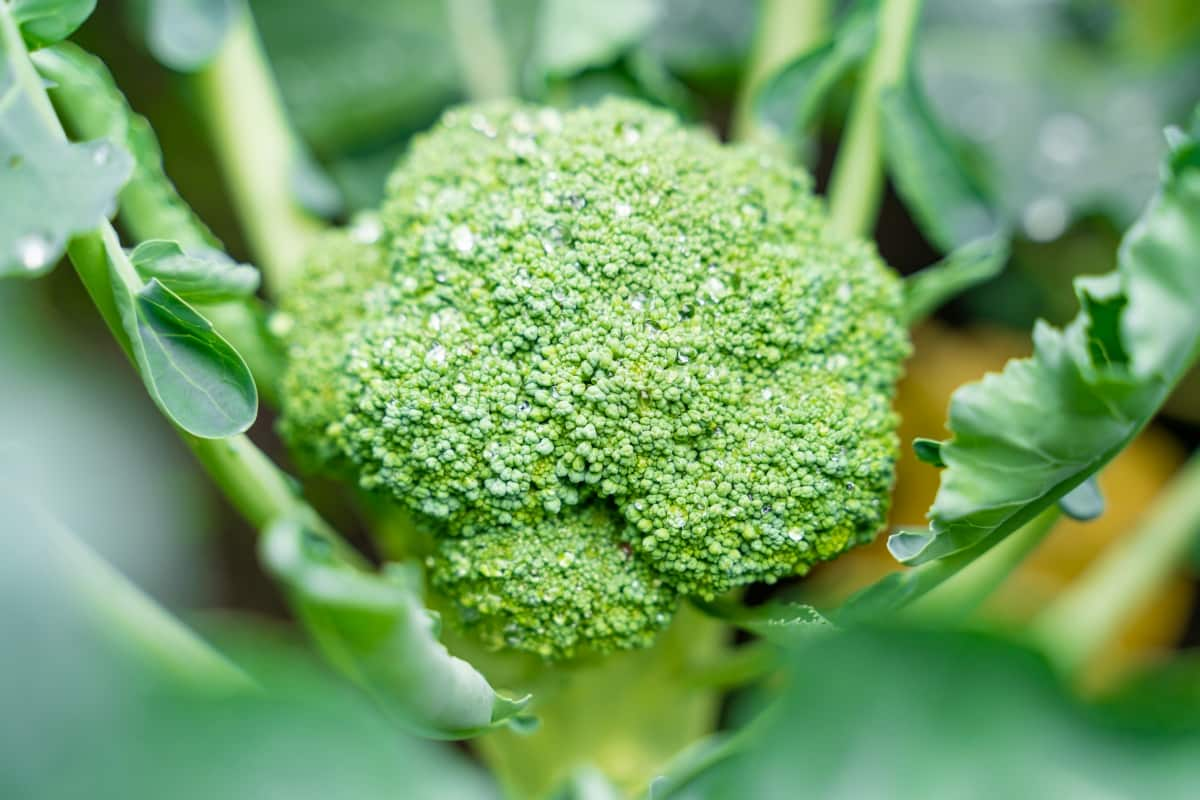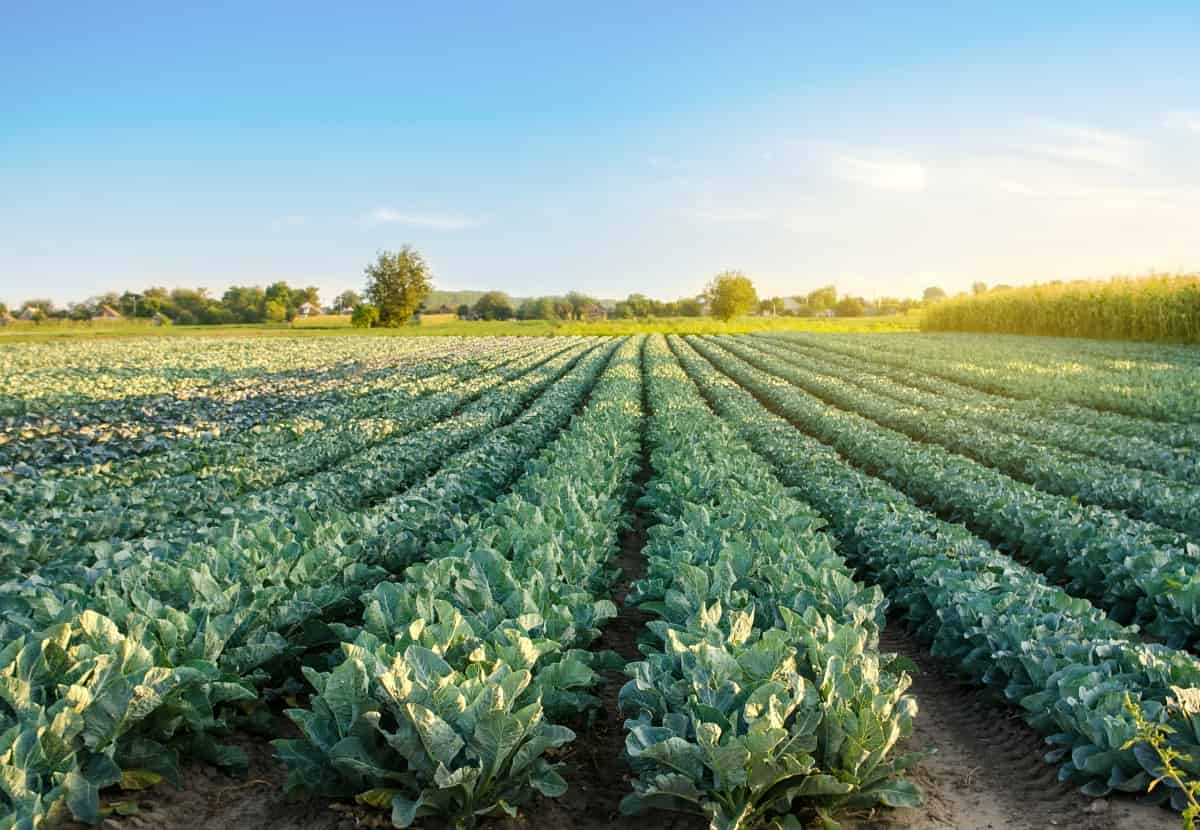Broccoli, a widely consumed vegetable, faces various challenges from pests and diseases, making effective management crucial for healthy crops. This article explores the different methods used in pest and disease management in broccoli farms, integrated pest management strategies, organic & chemical control methods, biological control techniques, and preventive measures. By understanding and implementing these strategies, farmers can protect their broccoli crops from common diseases and pests, ensuring a healthy and productive harvest.

Pest and Disease Management in Broccoli
Common Pests Affecting Broccoli Crops
Broccoli crops are vulnerable to various pests like aphids, caterpillars, and beetles, potentially leading to substantial damage if not effectively controlled. To combat these threats, farmers need to regularly inspect their crops for signs of infestation, such as chewed leaves or visible insects. Early detection is key in controlling these pests before they multiply and cause widespread damage. Physical removal of pests, such as handpicking caterpillars, and the use of barriers or traps can be effective initial steps in managing these common pests.
Integrated Pest Management (IPM) Strategies for Broccoli Farms
Integrated Pest Management (IPM) is a holistic approach that combines various strategies to manage pests in broccoli farms sustainably. IPM emphasizes the importance of understanding the pest life cycle and using that knowledge to intervene at the most effective points. This method involves consistent pest population monitoring, employing cultural techniques like crop rotation and intercropping to discourage pests, and implementing biological measures, like introducing natural predators. Chemical controls are used as a last resort under IPM, ensuring minimal environmental impact.
Organic Approaches to Controlling Pests and Diseases in Broccoli
Organic farming practices prioritize natural methods to control pests and diseases in broccoli. This includes using natural predators or parasitoids to control pest populations and applying organic pesticides derived from natural sources, such as neem oil or pyrethrin, which are less harmful to the environment and non-target organisms.
Chemical Control Methods for Broccoli Farming
In situations where pest and disease pressures are high, chemical control methods may be necessary to protect broccoli crops. Chemical pesticides can offer quick and effective results, but they should be used judiciously to minimize their impact on the environment and human health. Farmers should select appropriate chemicals for the specific pests or diseases they are targeting and follow label instructions carefully. It’s also essential to rotate different types of chemicals to prevent pest resistance.
In case you missed it: Frequently Asked Questions About Growing Romanesco Broccoli from Seed to Harvest

Biological Control of Pests in Broccoli Farms
Biological pest control employs living organisms like beneficial insects or microorganisms to manage pests on broccoli farms. This method can be highly effective and environmentally friendly. For example, introducing ladybugs can help control aphid populations, and certain bacteria can be used to target caterpillars. Biological control is often used in conjunction with other pest management strategies to achieve the best results.
Preventive Measures for Disease Management in Broccoli Crops
Prevention is a crucial aspect of managing diseases in broccoli crops. This includes implementing good agricultural practices, such as proper irrigation management to avoid excessive moisture, practicing crop rotation to reduce disease build-up in the soil, and selecting disease-resistant broccoli varieties. Implementing sanitation practices, such as debris removal and tool disinfection, can effectively mitigate disease transmission. Proactive adoption of these measures can substantially decrease the likelihood of disease outbreaks in broccoli cultivation.
Seasonal Pest and Disease Management in Broccoli Farms
Managing pests and diseases in broccoli farms requires an understanding of the seasonal variations that affect these challenges. During different seasons, broccoli crops face various threats, necessitating season-specific strategies. For instance, warmer months often see a rise in insect activity, leading to increased pest pressures such as aphids and caterpillars. In contrast, cooler, wetter months might bring about fungal diseases.
In case you missed it: The Economics of Broccoli Farming: Costs, Profits, and Market Trends

Farmers need to adapt their pest and disease control measures accordingly, employing more frequent inspections and tailored interventions during peak seasons. This might include increased use of organic pesticides in summer or enhanced air circulation and moisture control measures in cooler months. Seasonal management also involves preparing the soil and plants in anticipation of potential threats, such as using mulches to regulate soil temperature and moisture or selecting crop varieties that are more resilient to seasonal pests and diseases.
Environmental Factors Influencing Pest and Disease Incidence in Broccoli
Environmental factors significantly influence the incidence of pests and diseases in broccoli. Temperature, humidity, soil conditions, and rainfall patterns all play crucial roles in determining the prevalence and severity of various pests and diseases. For example, high humidity and warm temperatures can create ideal conditions for fungal diseases, while dry, hot weather may exacerbate pest infestations such as spider mites.
Understanding these environmental influences is critical for effective pest and disease management. Farmers need to monitor weather forecasts and environmental conditions regularly to anticipate and mitigate potential problems. Adjusting irrigation practices, implementing shading techniques during extreme heat, or enhancing soil drainage can be effective in creating less hospitable environments for pests and diseases. This proactive approach allows farmers to minimize the impact of environmental factors on their broccoli crops.
Emerging Pests and Diseases Impacting Broccoli Production
Broccoli production faces new challenges with the emergence of novel pests and diseases driven by factors like climate change and global trade. These emerging threats can be particularly problematic as they may lack known and effective management strategies. To tackle these challenges, farmers, researchers, and agricultural experts must collaborate to identify these new threats promptly. This involves continuous monitoring and reporting of unusual pest activities or disease symptoms.
In case you missed it: How to Pollinate Broccoli Plants: Hand Pollination, Natural Pollination Methods, and Tips

Once identified, research into understanding these new threats is crucial, including their life cycles, behaviors, and weaknesses. Developing and disseminating effective management strategies, including breeding broccoli varieties with resistance to these emerging threats, becomes a priority. Keeping abreast of the latest research and extension services can equip farmers with the knowledge to combat these new challenges in broccoli production effectively.
Conclusion
Effective pest and disease management in broccoli farms is a dynamic and multifaceted endeavor, requiring a deep understanding of seasonal variations, environmental factors, and emerging threats. By integrating various strategies – from seasonal adjustments and environmental adaptations to tackling new and emerging pests and diseases – farmers can protect their broccoli crops and ensure sustainable production. Staying informed, adaptable, and proactive in pest and disease management practices is key to overcoming these challenges and securing the health and productivity of broccoli farms.
- Feed Your Flock for Less: Top 10 Tips to Save on Chicken Feed
- Ultimate Guide to Ossabaw Island Hog: Breeding, Raising, Diet, and Care
- Hatching Answers: The Top 10 Reasons Your Chickens Aren’t Laying Eggs
- Eggs and Economics: Breaking Down the Cost of Raising Backyard Chickens
- Defend Your Greens: Proven Methods to Keep Iguanas Out of Your Garden
- Ultimate Guide to Cinnamon Queen Chicken: A Comprehensive Guide for Beginners
- Ultimate Guide to California Tan Chicken: Breeding, Raising, Diet, Egg-Production and Care
- Ultimate Guide to Marsh Daisy Chicken: Breeding, Raising, Diet, and Care
- 10 Types of Chicken Farming Businesses You Can Start for Profits